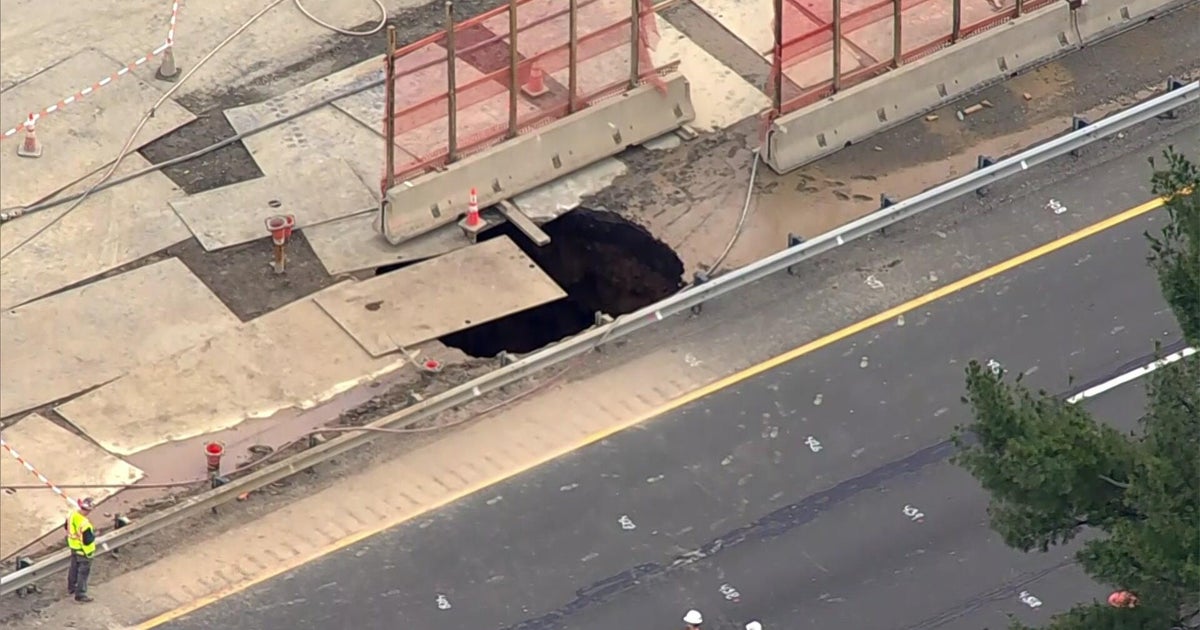Stimulus Check Update: What's The Latest On A Second Payment Package?
(CBSNewYork) -- Stimulus discussions are back on the table in Washington. Late last week House Speaker Nancy Pelosi and Treasury Secretary Steven Mnuchin suggested they would soon continue talks about a possible second stimulus package. Such a package would almost certainly include another round of stimulus payments to individuals.
But while Democrats and Republicans seem to agree a second stimulus payment is necessary, they differ on the amount of that payment as well as other aspects of any new stimulus package. The Democrats introduced a revised package this week worth $2.2 trillion (down from the $3.4 trillion HEROES Act they passed in May.) Details remain unclear, though some similarities to the previous package can be expected, like the additional $600 in weekly federal unemployment benefits. Republicans, citing concerns about the budget, are looking to spend $1 trillion less. Meanwhile the economy crawls along, households continue to struggle and the 2020 election creeps closer.
So how might a second stimulus package affect you?
The good news is that all parties involved agree that another round direct payments is critical. Democrats are seeking a $1,200 payment to consumers, while Republicans remain stuck at $500. President Trump is also eager to put money in the hands of consumers. Another piece of good news is that politicians would like to have that money in the hands of voters before the election on November 3.
But the details could also change from the CARES Act, the source of the first stimulus payment, as well as from the Democrats' Heroes Act and Republicans' HEALS Act. Assuming the rules from the first stimulus payment hold, which is the most likely scenario, individuals with an Adjusted Gross Income (AGI) of up to $99,000 per year would qualify for a payment of up to $1,200. (This total payout decreases as AGI increases from $75,000 to $99,000.) Married couples who filed jointly, with an AGI of up to $198,000 per year, would qualify for a payment of up to $2,400. (This total payout decreases as AGI increases from $150,000 to $198,000.)
Here's a tool to estimate how much stimulus you might receive.
Dependent eligibility would also be expanded. Democrats would like to add $1,200 per dependent for up to three dependents. Republicans are looking to add $500 for every dependent claimed on one's taxes without a limit. In the last round of stimulus, about 13 million people, between the ages 17 and 24, were claimed as dependents and did not receive a payment. That was because the first bill used the tax-code definition of a "qualifying child," the age of which tops out at 16. A second stimulus may very well bring in all ages, including college students and adult dependents.
How would that money get to you?
The first round of stimulus payments took almost three weeks to arrive in consumers' bank accounts. For all the CARES Act payments, 75 percent (120 million) were issued through direct deposit, 22 percent (35 million) through physical check and three percent (4 million) through prepaid EIP debit card. This time around, Mnuchin believes up to 50 million payments could start arriving the week after the president signs off. Given delays the first time around, however, many people could once again wait weeks if not months to receive their payments.
The best way to ensure your payment arrives as early as possible is to sign up for direct deposit. If you passed along your banking details to the IRS to receive a tax refund, they already have your information. Likewise, if you signed up with the IRS for the first stimulus payment, you should be all set. Otherwise, keep an eye out for the government's registration tool when/if another stimulus is approved.
But time is tight for delivering a second stimulus payment, and Congress's attention is being pulled in many directions. The current troubled economy has millions of American households struggling to make ends meet. The last stimulus package expired two months ago. Congress is attempting to replace former Supreme Court Justice Ruth Bader Ginsburg, who recently passed. And the 2020 election grows closer by the day, meaning less time for campaigning.
>>READ: Stimulus Check Update: Will Americans See More Financial Aid Before The Election?
A second stimulus payment is far from imminent. But here are a couple possible timelines for that money reaching your bank account.
- If the House can pass a final bill this Friday (October 2) and the Senate the following Monday (October 5), the president could sign as early as Tuesday (October 6). Direct deposits would start going out the Week of October 12, and checks would start going out the week of October 19.
- If the House can pass a final bill next Friday (October 9) and the Senate the following Monday (October 13), the president could sign as early as Tuesday (October 15). Direct deposits would start going out the Week of October 19, and checks would start going out the week of October 26.
- If the House can pass a final bill on Friday (October 16) and the Senate the following Monday (October 19), the president could sign as early as Tuesday (October 20). Direct deposits would start going out the Week of October 26, and checks would start going out the week of November 2.
The House is scheduled to go on recess October 2, though Speaker Pelosi has signaled a willingness to postpone their next break. The Senate break is scheduled to start October 9, though that date could change as well. But as the election gets closer, the likelihood of a pre-election stimulus payment grows slimmer.



